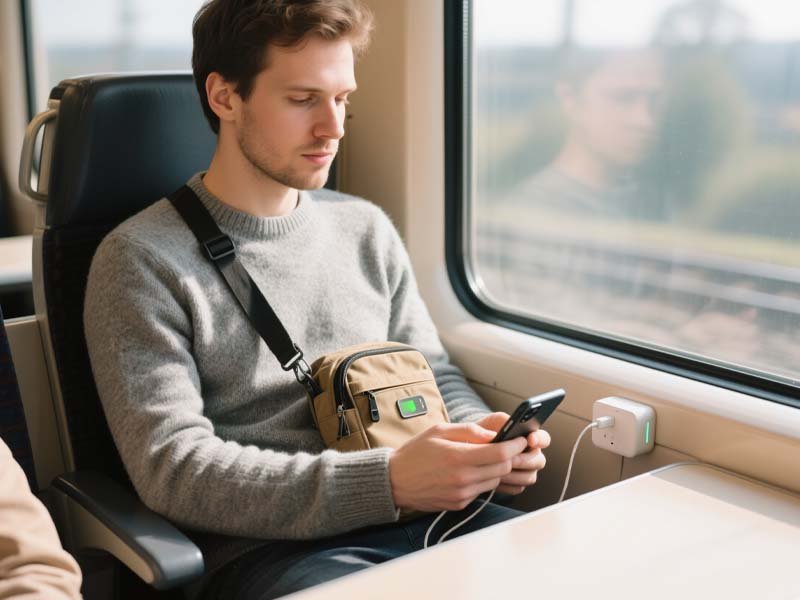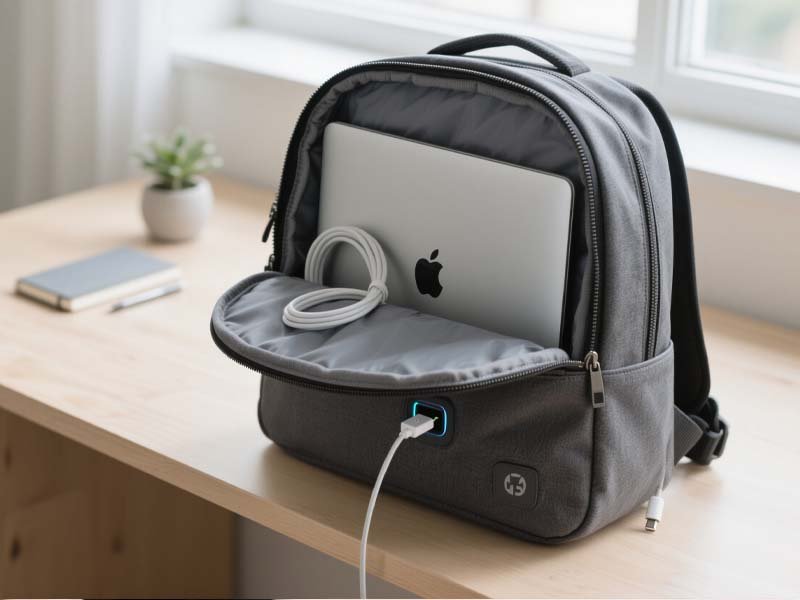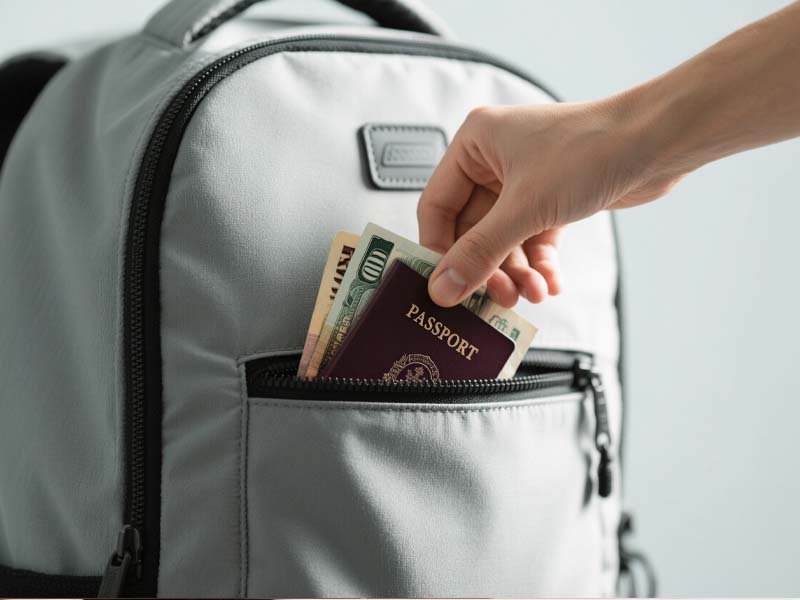0
What to Pack for Europe Trip: Ultimate Electronics Checklist + Smart Packing Hacks
Travel tech can make or break a Europe trip. From snapping cathedral photos to navigating trains, your devices need power, protection, and smart organization. This guide — focused on what to pack for europe trip electronics — covers the must-have gear, airline-safe power-bank rules, anti-theft tactics backed by real data, a smart product tie-in, and five electronics you should leave at home. Read on for airport-safe, train-ready, and sightseeing-proof tech packing.

Must-Have Electronics (and why)
1. Phone + Portable Charger (keep it ≤ ~20,000 mAh for flights)
Your phone is your map, wallet, camera, and translator. Bring a reputable portable charger (power bank) for long train rides and long museum days. Most airlines follow international guidance allowing spare lithium-ion batteries up to 100 Wh (roughly up to ~27,000 mAh depending on voltage) in carry-on without approval — but many airlines commonly recommend or limit passengers to power banks at or under 20,000 mAh for convenience and acceptance. Always pack power banks in your carry-on, not checked luggage, and check your airline rules before flying. FAAlot.com
Tips:
- Choose a power bank with USB-C PD (Power Delivery) for fast charging multiple devices.
- Mark it with capacity (Wh or mAh) so gate staff can verify quickly.
- Bring cables with multiple connectors (USB-C + Lightning).
2. Universal Adapter (include Type C / Type F plugs)
European sockets vary — Type C/E/F plugs cover most of mainland Europe. A compact universal adapter with surge protection and multiple USB ports is essential. If you’ll travel between the UK and mainland Europe, carry a small UK adapter too. Search for adapters with built-in fuse protection for device safety.
3. Noise-Canceling Headphones (for trains & flights)
Long train rides and budget flights are a reality on European itineraries. Noise-canceling headphones block chatter and train rumble, help you sleep on red-eye trips, and make audio tours clearer. Pick lightweight, foldable models with good battery life and a wired option (3.5mm) for planes that disable Bluetooth during certain operations.
4. Lightweight Camera or Phone Lens Kit
For most travelers, a newer smartphone camera + a small phone lens kit gives superb results without the bulk of a full DSLR. If photography is your passion, choose a compact mirrorless camera rather than a heavy SLR to save weight.
5. Travel Router / Portable Hotspot (optional)
If you rely on steady internet for work, a small travel router or a local data SIM with hotspot capability is a lifesaver in trains and guesthouses with weak Wi-Fi. Bring a compact battery-operated router for privacy when using public networks.

Product Tie-in: USB-Charging Backpack with TSA-Approved Compartments
If you only buy one travel accessory for your electronics, get a USB-charging backpack with TSA-friendly compartments. Look for these features:
- Dedicated, padded laptop sleeve (fits up to 15–16″) that zips out flat for airport security (TSA-approved lay-flat design).
- Built-in external USB charging port (internal power bank pocket) so you can charge on the move — keep the power bank in the internal pocket (carry-on only).
- Multiple cable-management channels and elastic pockets for chargers, earbuds, and battery banks.
- Hidden anti-theft pockets on the back panel or under the flap for passport and cash.
- RFID-blocking card slot to protect contactless cards.
A good USB-charging backpack saves time at security, keeps cables tidy, and prevents frantic bag-digging on busy trains.
Anti-Theft Tips (and the data that proves they matter)
Tourist hotspots in Europe are popular for pickpockets. Multiple studies and local police data show that pickpocketing and petty theft remain a top complaint in major tourist cities — Italy and Spain rank highly on recent pickpocket indices, and Barcelona and Rome frequently appear among the hotspots to watch. For example, investigative coverage and travel indices have highlighted Rome and Barcelona as among Europe’s most reported pickpocket locations. euronewsQuotezone
Local police data also underline the scale of theft in busy cities: in recent reports, pickpocketing made up a large share of reported thefts in Barcelona, highlighting the need to protect phones and wallets. Barcelona Yellow
Practical anti-theft measures for electronics:
- Use hidden pockets in your laptop bag or backpack for passports, extra cash, and backup cards. Keep phones in inner zipped pockets while in crowds.
- Keep devices out of back pockets — front pockets or zipped internal compartments are safer.
- Use cable locks for backpacks when you sit at cafés or on trains (loop the strap through a chair leg).
- Use tracking & remote-wipe: enable Find My (Apple) / Find My Device (Google) and make sure remote-wipe is set up.
- Avoid charging in public USB stations — use your power bank or an approved adapter to avoid juice-jacking.
- Turn off auto-connect to public Wi-Fi and use a VPN for sensitive transactions.
Data-backed caution pays off: vigilance and a few anti-theft accessories drastically reduce your chance of being targeted.

Packing Organization: How to Fit All Your Tech (and Never Lose a Cable)
- Cable organizer / tech roll: Put charging cables, dongles, and earbuds into a zip tech roll so nothing tangles.
- Label cables with tiny stickers or colored ties so you know which charger is for which device.
- Bring one multiport USB charger and a small multi-plug adapter — this reduces bulky travel bricks. Choose a charger with at least one USB-C PD port to charge laptops and phones quickly.
- Use packing cubes: dedicate one small cube for electronics and accessories, another for cables and power banks.
- Keep a daily tech kit in your day bag: phone, power bank, one cable, and earphones so you don’t dig through your main suitcase.
- Store backups separately: keep a second charging cable in a hidden pocket in case the main kit is stolen or misplaced.
Airline Rules & Power Bank Safety (short version)
- Carry-on only: Power banks must be in carry-on bags — never checked. TSA and aviation authorities require this for safety. TSAFAA
- Capacity limits: The common limit is 100 Wh (roughly up to ~27,000 mAh depending on battery voltage) without airline approval. Many carriers and travel guides recommend a 20,000 mAh power bank as a practical travel-friendly size — accepted by most airlines. Check your carrier’s policy before travel. FAAlot.com
Pro tip: carry the power bank in its original box or label its Wh rating so airline staff can verify quickly.

Anti-Juice (Security) Hack: How to Charge Safely in Public
- Portable battery + owned cable is safer than public USB ports — they can be compromised.
- Use a USB data blocker (a tiny adapter that blocks data pins, allows only power) when you must use unknown USB ports.
- Charge in a secure spot — cafés with outlets on the wall near your table are better than public kiosks.
- Avoid charging and leaving devices unattended.
Bonus: 5 Electronics to Leave Home (you don’t need them for most Europe trips)
- Hotel hair dryer / bulky styling tools — many hotels include a dryer; EU voltage differences and adapters make bringing your own a hassle.
- Second camera body / heavy DSLR lens — smartphones or one small mirrorless body + lens cover 99% of trips.
- Multiple external hard drives — use cloud backups or one small SSD if you must.
- Power banks >100 Wh (very large capacity) — these often require airline approval and can be confiscated. FAA
- Unnecessary single-purpose devices (travel kettles, hair straighteners) — buy or borrow locally if indispensable.

Quick Electronics Packing Checklist (printable)
- Phone + case + screen protector
- Portable charger (≤20,000 mAh recommended) + USB-C PD cable
- Universal adapter (Type C/F and local plug)
- Noise-canceling headphones or earbuds
- Lightweight camera or phone lens kit (optional)
- USB charging backpack or TSA-friendly laptop bag with hidden pocket
- Cable organizer, multiport charger, spare SD card, microfibre cloth
- Backup power bank and cables in carry-on
- Chargers & adapters labeled and stored in a tech roll
Final Tips — Travel Smart, Charge Safe, Stay Seen (but not targeted)
Electronics make travel better — but dead batteries and stolen phones can ruin a day. Pack smart: choose a USB-charging backpack with TSA-approved compartments, follow airline power-bank rules, use hidden pockets for valuables, and prioritize lightweight, multi-use gear. With the right kit and a few anti-theft habits, your devices will keep you connected, powered, and worry-free across Europe.






